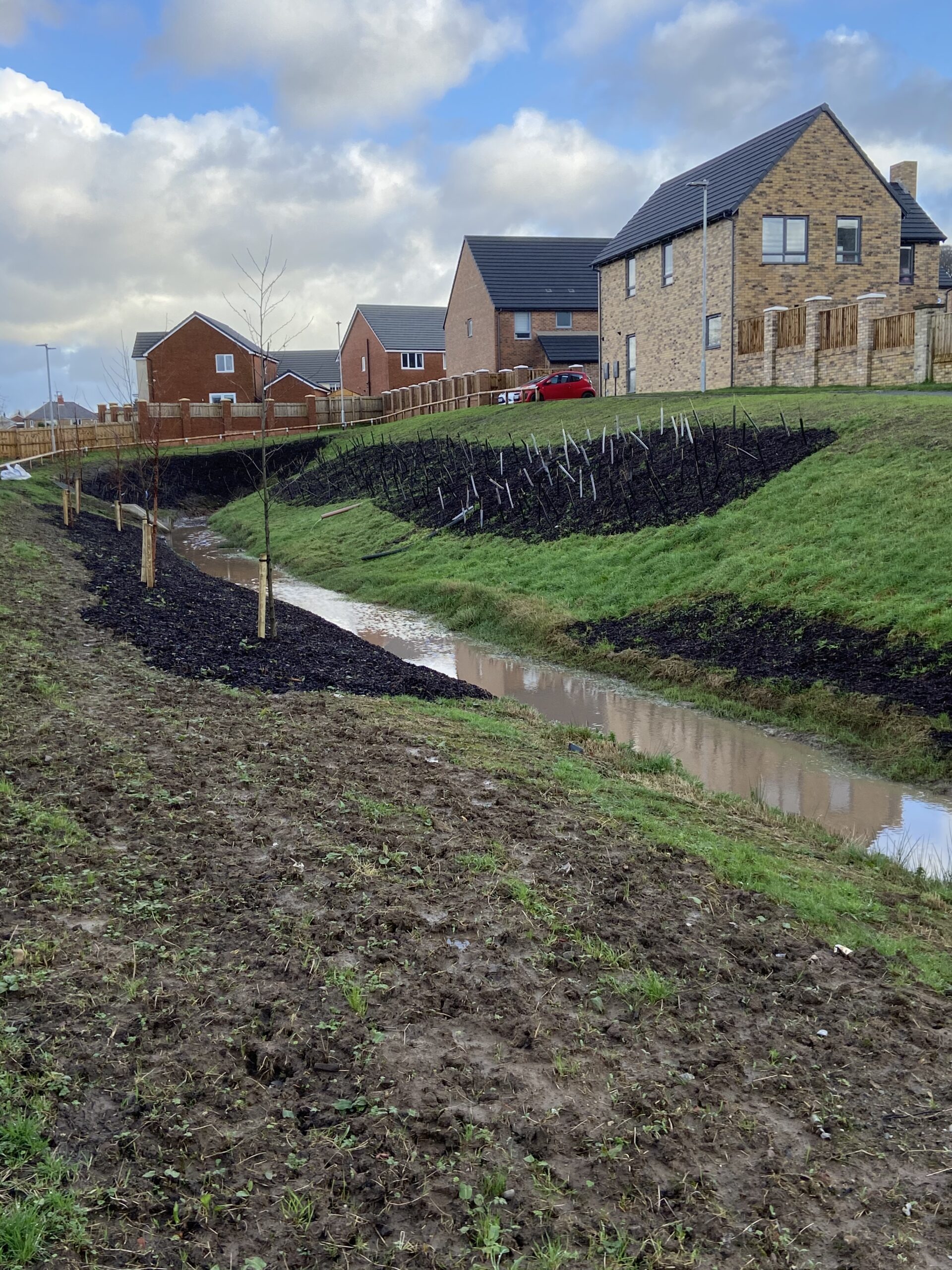This blog has been written by The Flood Hub People.
SuDS are an important part of green infrastructure, offering a more natural approach to managing surface water flood risk, but they can also be used to ease demand on water supplies in urban areas.
Sustainable Drainage Systems (SuDS) are an essential part of green infrastructure. They provide a natural approach to managing surface water flood risk while also helping to ease pressure on water supplies in towns and cities. With climate change and population growth increasing the challenges we face, SuDS are more important than ever.

Image: The Flood Hub
Why SuDS Are Essential
The population of England is projected to grow by 8.7 million people by 2050, meaning millions of new homes will need to be built. Without sustainable drainage in place, these developments could put huge pressure on existing drains and water supplies.
Currently, around 3 million properties in England are at risk of surface water flooding, more than those at risk from rivers and the sea. At the same time, we are seeing:
All of these highlight the need for new developments and existing properties to adopt sustainable water management.
The Impact of Urbanisation
Over the past decade, 22,000 hectares of green space in England have been lost to hard surfaces like paving, car parks and rooftops. Unlike soil and vegetation, these impermeable surfaces don’t absorb rainfall. Instead, water runs off quickly into drains, increasing the risk of local flooding and placing pressure on already stretched sewer systems.
Both homeowners and businesses can retrofit SuDS to their properties, but it is much easier to include them during the design stage of a development. Since 2015, planning policy requires SuDS to be considered for all new residential, commercial and mixed-use developments.
SuDS and Climate Change
With climate change expected to bring hotter, drier summers and wetter winters, SuDS offer multiple benefits:
By easing demand on drinking water supplies, SuDS help us adapt to more extreme weather while making our communities more resilient.
Source Control: Managing Water Where It Falls
One of the key principles of SuDS is source control, dealing with water at the point where it falls. This reduces the volume of runoff and helps water soak back into the ground.
Examples of source control SuDS include:
Rainwater can be used for everyday activities such as flushing toilets, watering gardens, cleaning cars, or even irrigation on a larger scale. This not only reduces demand on treated drinking water but can also lower household and business water bills.
Looking Ahead
Sustainable Drainage Systems are more than just a flood management tool, they are a vital part of creating climate-resilient communities. By incorporating SuDS into developments, retrofitting them into existing properties, and making small changes at home, we can:
For more information on SuDS and the different types, please download our SuDS Booklet here.
Sources used: Environment Agency, Sustainable Business Forum – Bricks and Water Policy,